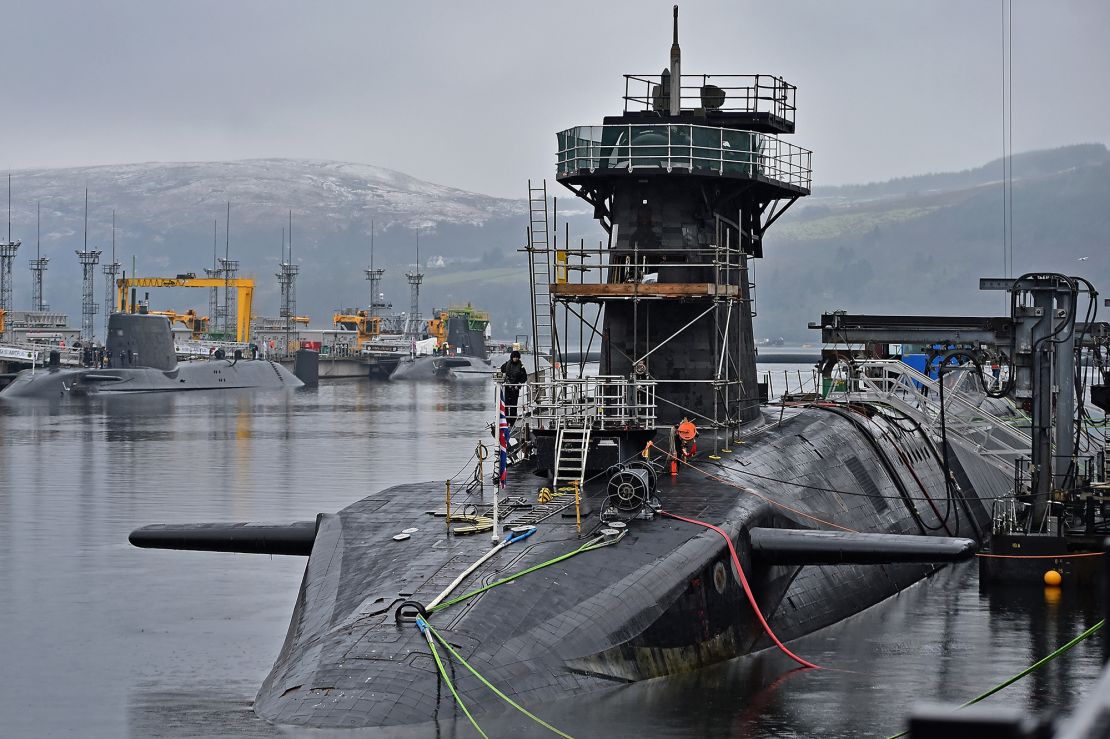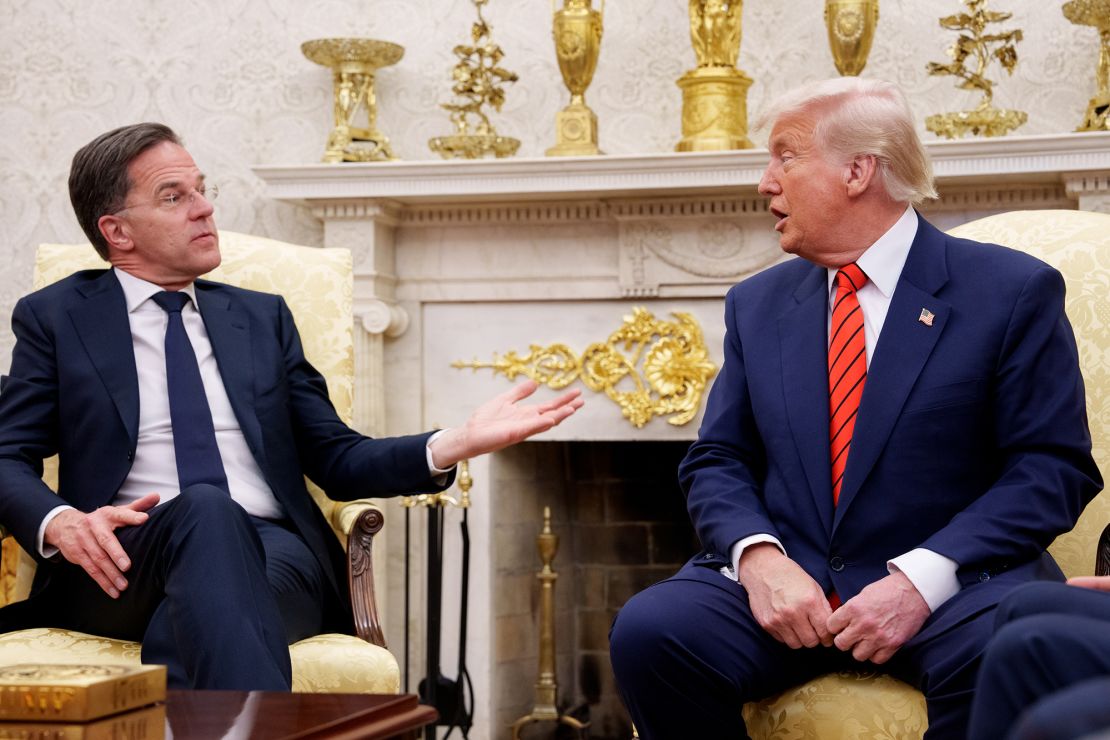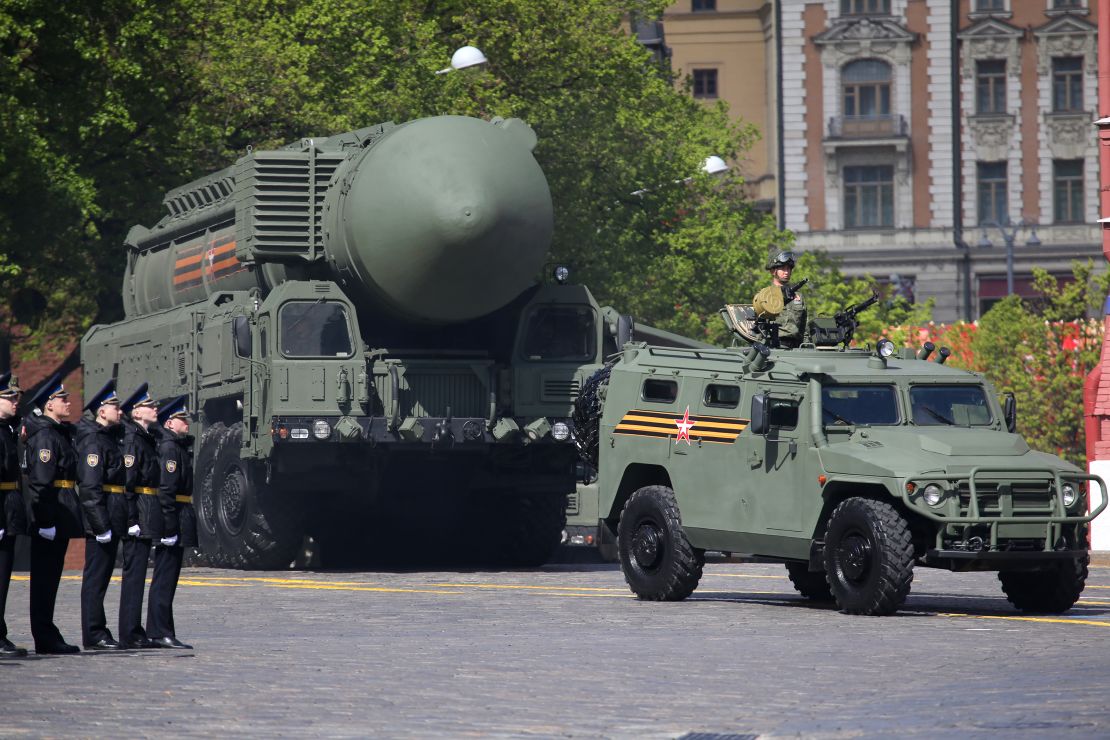Paris
CNN
—
It’s a new day in Europe.
Gone are the halcyon years of unshakeable American commitment to Europe’s defense against Russia.
Here to stay – at least while Donald Trump is in the White House is something more transactional. And the stakes couldn’t be higher.
Europe must “step up in a big way to provide for its own defense,” US Vice President JD Vance told decision-makers in Munich in February.
Europe’s answer so far has been to pledge to boost spending at home and for Ukraine, with an eye to buying European-made armaments. But a more radical solution has also been floated: a European “nuclear umbrella.”
If the United States has always been Europe’s big brother, France and the United Kingdom are longstanding nuclear powers too — and some European leaders are wondering whether the ultimate deterrence to Moscow could come from closer to home.
While the bulk of the world’s nuclear weapons are US or Russian-owned, France has some 290 nuclear warheads, the UK 225 of the US-designed Trident missiles.
Recent weeks saw a flurry of comments from European leaders looking to bolster their common defense under a British or French nuclear umbrella, as Washington’s reliability appears to waver.

French President Emmanuel Macron earlier this month promised to “open the strategic debate on the protection by our deterrence of our allies on the European continent.”
His comments came after Germany’s presumed next Chancellor Friedrich Merz called for talks with France and the UK on extending their nuclear protection.
Polish Prime Minister Donald Tusk said that the French proposal was “not new” and had come up several times in conversations, throwing his support behind the idea.
Other leaders from countries historically averse to nuclear weapons, like Sweden and Denmark, also welcomed France’s overtures towards European allies.
Since General Charles de Gaulle established France’s nuclear force in the late 1950s, in part to keep Paris at the heart of global decision-making, France’s program has been proudly sovereign — “French from end to end,” as Macron described it.
But for decades during the Cold War, France also sought to bring European allies under its nuclear protection, Yannick Pincé a historian at France’s Interdisciplinary Center for Strategic Studies (CIENS) told CNN.
The UK hasn’t made any public offer to further share or alter its nuclear protection. But its warheads remain pledged to the US-dominated NATO command, thus already offering a strategic protection to European allies.
Some leaders are still hoping for reinforced US support though.
On Thursday, Polish President Andrzej Duda called on Trump to deploy US nuclear weapons in Poland, likening the move to Russia’s decision to base some of its own nuclear missiles in Belarus in 2023.
“I think it’s not only that the time has come, but that it would be safer if those weapons were already here,” Duda told the Financial Times.

Without an arsenal on the scale of Russia’s, France has only been “able to threaten strategic retaliation, that’s to say, hitting the opponent very hard to act as a deterrent,” nuclear historian Yannick Pincé told CNN.
The relatively diminutive size of France’s nuclear war chest compared to that of the US made it easy to dismiss, even among the West’s top generals, retired Gen. Michel Yakovleff, former deputy commander of NATO forces in Europe, told CNN.
Aside from its huge power, the American arsenal’s size and diversity gives it another key advantage in nuclear war: the potential to minimize any thermonuclear exchange. The US, “can use what we call a graduated response,” Pincé said, to perhaps even deliver a single strike, instead of unleashing its entire arsenal.
In contrast, the French nuclear armory – with missile-laden submarines and nuclear-armed bombers – was historically intended as a last resort if Cold-War Russian forces threatened the French homeland, likely unleashing a barrage on key sites in territories of the Soviet sphere to force an enemy withdrawal.
It is differences such as these that pose a key challenge to any European-centered nuclear umbrella.
“One thing that the Europeans don’t have is nuclear culture. They don’t understand it because they’ve always presumed that the Americans would do it,” Yakovleff said. “I suspect that Macron is thinking of, if I dare say, educating whoever wants it, on nuclear dialogue.”
Macron has proposed having allies participate in the country’s secretive nuclear exercises, to see firsthand France’s capabilities and decision-making.
But he’s also been clear that he’s not yielding his “nuclear button” to allies or even to Brussels. The decision to launch a nuclear strike “has always remained and will remain” in his hands, he told France in a national address.
The UK military has been “very active in terms of increasing what it’s called the nuclear deterrence IQ at NATO,” said Lukasz Kulesa, director of UK-based think tank RUSI’s proliferation and nuclear policy program, thereby “making sure that all the allies are aware and understand the grammar of nuclear deterrence.”
This means that if Macron’s proposal became reality, “France wouldn’t be stepping in to a completely blank slate. These are countries that for decades have been covered by extended nuclear deterrence,” Heather Williams, director of the Project on Nuclear Issues at the Center for Strategic and International Studies, told CNN.
Crucially though, the US hasn’t said it’s pulling out of its commitment to protect NATO allies, she stressed.
This week, a nuclear-capable US bomber flew over central Stockholm to mark the one-year anniversary of Sweden’s accession to NATO – a highly symbolic choice.
Meanwhile, a February report from the Federation of American Scientists pointed to, “mounting evidence from three years of collection of documentation and observations” that indicate that the US is preparing to redeploy nuclear warheads to its main airbase in the UK for the first time in over 15 years. CNN approached the US Department of Defense for comment.
Such a move might signal how seriously Washington views the rising temperatures in Europe.

Megaton for megaton, Europe’s arsenal bears no comparison with that of Moscow.
Boosting Europe’s nuclear arsenal would be a “question of years, if not decades,” of investment and development, according to RUSI’s Kulesa.
But deterrence isn’t just a question of the number of missiles; demonstrating the operational credibility of Europe’s nuclear forces is also essential.
More cohesive cooperation with allies around nuclear forces would be a strong boost to deterrence, Kulesa said. That could entail air-to-air refuelling from allies in support of French bombers or anti-submarine warfare capabilities to protect British or French nuclear sub maneuvers.
Given decades of shrinking investment in the British military, questions have been raised over the deterrence that Britain’s conventional and nuclear weapons offer, particularly given its reliance on a US supply chain.
In the last eight years, the UK has publicly acknowledged two failed nuclear missile tests, one of them in the waters off Florida, when dummy missiles didn’t fire as intended.
British Prime Minister Keir Starmer last month promised what the government described as “the biggest investment in defense spending since the Cold War” in an increasingly dangerous world.
Other non-nuclear European allies are boosting their spending on conventional weapons – and this also counts, analysts say.
Fundamentally, “nuclear weapons are not a magic instrument,” said Kulesa.
Any true deterrence to Russia will need conventional and nuclear forces, he said, and under Trump, “the question is whether you can count on the American commitment and involvement.”

